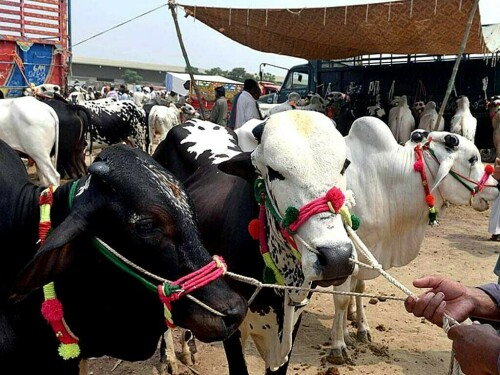Livestock Farmers Advocate for Policy Overhaul to Boost Exports
Livestock farmers contend that their industry possesses considerable unrealized potential due to governmental neglect. They emphasize the urgency of enacting a thorough strategy to facilitate the export of livestock and meat products, while also addressing critical needs such as reduced energy expenses and reliable water access for livestock pens.
According to farmers in Sindh and Punjab, providing adequate resources and support could revolutionize the meat export sector.
Cost Disparities and Export Potential
Jamil Memon, a seasoned livestock farmer and President of the Memon Dairy Cooperative Farming Society, pointed out that Saudi Arabia imports over three million sacrificial animals, primarily lambs and sheep, from Australia and New Zealand for the Hajj season. This is because Pakistani livestock is 30% to 40% more expensive.
Memon explained that Australia strategically increases lamb production during droughts when farmers struggle to feed their livestock. These lambs, weighing between 60kg and 200kg, are also guaranteed to be disease-free.
Key Policy Recommendations
To enhance Pakistan’s competitiveness, Memon suggests that policymakers prioritize:
- Lowering energy costs for gas, electricity, and fuel.
- Ensuring dependable water supply and connections to livestock pens.
- Removing encroachments on agricultural lands.
- Introducing incentives to encourage animal farming and the export of live animals and meat.
Challenges in Water Access and Land Rights
Memon highlighted the numerous challenges confronting local livestock farmers.
Superhighway Pens
Along the Superhighway (M-9 motorway connecting Karachi and Hyderabad), approximately 200,000 to 250,000 large animals, including cows and buffaloes, are housed in various pens stretching from Sohrab Goth to Kathore in Gadap Town, Malir District, Karachi. Yet, none of these pens have access to fresh water connections, forcing farmers to rely on groundwater.
Furthermore, the 30-year land lease for these Superhighway areas, which spanned from 1992 to 2022, has expired, leaving farmers insecure about their property rights.
Bhains Colony Issues
The Bhains/Cattle Colony in Landhi, encompassing 3,000 acres and housing 400,000 animals, faces similar issues. Memon noted that only half of the colony receives water from the Karachi Water and Sewerage Corporation, while the remaining farmers depend on groundwater.
The colony’s 30-year land lease, initially granted from 1965 to 1995, has also expired, leaving farmers without property rights for nearly three decades. This uncertainty deters commercial farmers and potential investors, undermining confidence in the sector.
Sindh’s Livestock Potential
Dr. Mazhar Ali Rind, Deputy Director of Sindh Livestock/Animal Husbandry, emphasized Sindh’s abundant resources of small animal breeds like goats, lambs, and sheep, concentrated in districts such as Shaheed Benazirabad, Matiari, Tando Allahyar, Tando Mohammad Khan, and Hyderabad. Large animals are prevalent in Tharparkar, Badin, Thatta, and other regions.
Dr. Rind asserted that Pakistan could effectively produce and export disease-free, healthy livestock by implementing appropriate policies. He underscored the critical need to establish disease-free zones in areas like Gilgit-Baltistan, Azad Kashmir, Rahim Yar Khan, and Tharparkar.
Livestock Farming Methodologies
Livestock specialists and commercial farmers classify animal farming into three primary types:
- Range Farming: Animals graze on open pastures and ranges.
- Intensive Farming: Animals are raised in confined areas under controlled conditions within shades or pens.
- Semi-Intensive Farming: Animals are reared on open land with limited enclosures, using metal fences for predator protection.



Comments (0)
No comments yet. Be the first to comment!
Leave a Comment